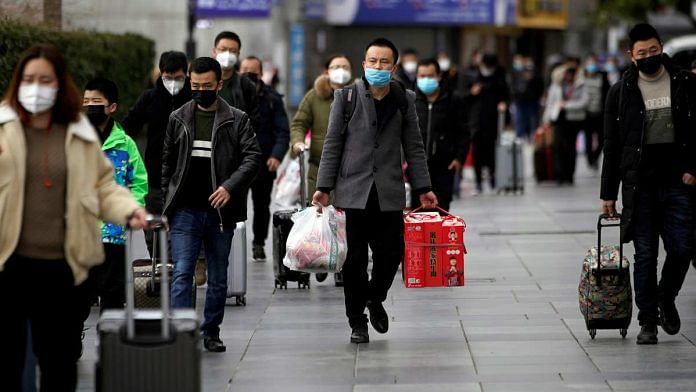New Delhi: The world is on the edge over the rise in the number of coronavirus cases. Masks have become commonplace and sanitisers have been flying off the shelves.
The situation has given way to rising misinformation — about the virus being “cooked up” in a lab in China and closer home, that cow dung and urine can combat the outbreak.
It is in times like this that the dissemination of information by governments becomes essential. Singapore has shown the way in this regard, winning high praise for its comprehensive approach in providing preventive information and tracking all the coronavirus cases down to the smallest fact.
But as the ongoing crisis has shown, not every country has proven to be as proficient at “risk communication”. Iran, one of the hotspots of COVID-19 outside of China, is among them.
The country reported its first case around 19 February. Nearly a week later, the numbers had surged to 95 even as a lawmaker accused the government of not disclosing the actual death toll.
On 25 February, deputy health minister, Iraj Harirchi, denied the claims at a news conference and said that if they were proven true, he would resign. Harirchi seemed visibly feverish and was wiping his forehead profusely during his address. A day later he tested positive for the infection.
Iran’s deputy health minister said he has contracted the coronavirus & placed himself in isolation, a day after appearing feverish at a press conference in which he downplayed its spread in the shrine city of Qom & said mass quarantines were unnecessary#news #Iran #IrajHarirchi pic.twitter.com/ku7xOqV1iZ
— Chris Trikomitis (@ChrisTrikomitis) March 1, 2020
Italy is among the other worst affected countries but confusion has prevailed ever since Prime Minister Giuseppe Conte declared a lockdown Sunday.
The BBC quoted a shop owner as saying, “one day they say one thing, and the next day they do just the opposite”.
The televised address by Conte Sunday raised many alarms over the ongoing situation even though he urged people to stay calm.
“The government is forced to intervene even more decisively to protect all of us and especially the most fragile and vulnerable people. The right decision today is to remain at home,” he said and added, “We are facing an emergency, a national emergency. We have been applying precautionary measures from the beginning and we are facing the situation with awareness, without underestimating it.”
The European nation recorded the highest death toll in a single day on Wednesday as the infection claimed 168 lives bringing the count to 631 in the country while the number of positive cases have crossed 10,000.
Perhaps, both countries would have benefited from Vietnam Health Ministry’s catchy coronavirus song, released earlier this week. Set to animated visuals of menacing germs, the song begins by laying out the context of the outbreak — where it started, how it spreads (like fire) and how you can prevent it.
“Let’s wash our hands, rub, rub, rub, rub them / don’t put your hands on eyes, nose, mouth/limit going to crowded places, fight back against corona!” the chorus sounds.
Also read: Forget coronavirus, homoeopathy can’t cure anything. It’s a placebo, at best
Of ‘risk communication’
The World Health Organization modules about epidemic management contain comprehensive chapters about “risk communication” listing guidelines for governments.
In an interactive module about managing epidemics, WHO lists “ten things to know and do”. The 10 guidelines that should be followed when exchanging information during an epidemic include “build trust”, “communicate uncertainty proactively”, “engage communities”, “message well”, “establish and use listening feedback systems”, “use social media as appropriate” among others.
The module highlights that “explaining honestly what is known and admitting what is uncertain is essential” in building trust.
Clearly, US President Donald Trump hasn’t been reading the guidelines. He has been playing down the coronavirus threat by saying that more people have died from the flu. The US has witnessed the number of positive cases rise to over 700, with 26 deaths.
Singapore Prime Minister Lee Hsien Loong got it right from the very start.
“The situation is still evolving,” he said in his televised address to his nation. “Every day brings new developments, and we have to respond promptly and dynamically.”
After detailing the preparedness of the medical facilities, Loong, however, didn’t understate the situation, saying hospitals are likely to be overwhelmed if the numbers keep growing.
“We are not at that point yet. It may or may not happen, but we are thinking ahead and anticipating the next few steps,” he said.
In India, where the number of cases have risen to above 50, the government’s “risk communication” measures have been steady but not really up to the mark.
Reassurances from the Prime Minister, televised press conferences by Union Health Minister Harsh Vardhan and newspaper and radio advertisements by state administrations are some of the communications measures so far.
On 7 March, PM Modi in a video conference with Jan Aushadhi Yojana beneficiaries urged people to desist from rumour-mongering. “The world has developed the habit of namaste to greet each other. We should also follow the same. It is better to avoid handshakes and greet everyone with namaste,” he had said.
Also read: India can fight COVID-19, but only if the private sector is allowed to step in quickly




Singapore is a Ghaziabad size, making it to be an improper standard for anything for any country in the world.